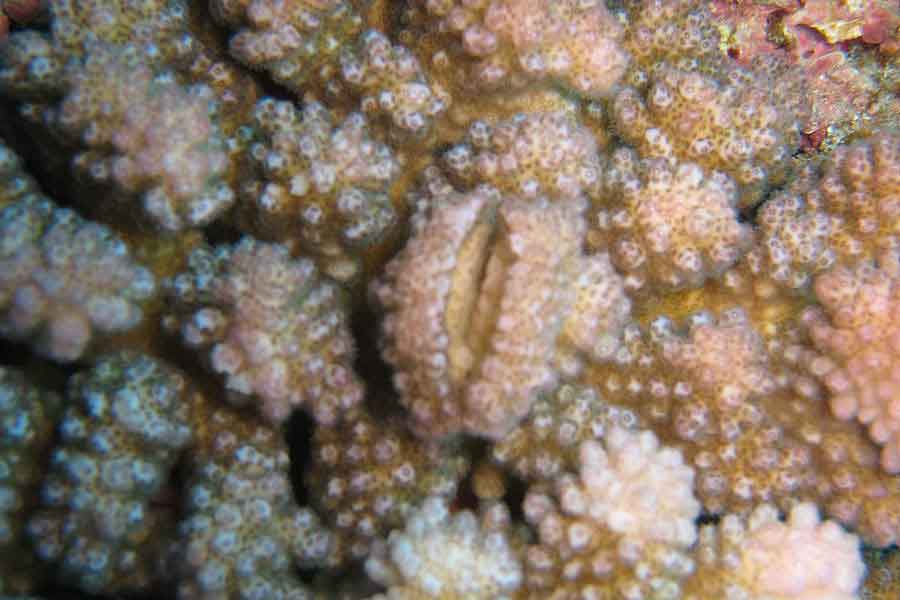
Ensuring the survival of a species often involves securing the hatching process. All animals are much weaker at birth, when they are still tiny larvae, exact miniature replicas of their parents. Precisely because that is the riskiest moment, marine animals are highly prolific.
Perhaps the greatest risk lies in the female, carrying the eggs, being attacked. If she is harmed, all the offspring will be lost. Among all defense strategies, one stands out: that of a small crab known as hapalocarcinus. The female of this unique creature settles on a coral branch and alters its growth to form a calcareous chamber around her.
Once the chamber is formed, the female can never leave it again. She obtains oxygen from the water and food from the plankton that enters through small openings to the outside. Meanwhile, the male of the same species roams freely around the reef. Being considerably smaller than the female, he can enter the chamber through the openings to mate and then return to the freedom of the reef.
The offspring resulting from this peculiar union can also exit through the openings. The males will join the reef life, while the females will search for their own coral branch to form their own prison, where they will spend the rest of their lives.
This ingenious form of protection and even the small size of the crab do not save it from human encroachment. In Japan, a dead coral chamber containing a preserved female hapalocarcinus inside is considered a distinguished wedding gift. Undoubtedly, it sends a clear message to the bride about the behavior to follow in the future.
«One cannot defend what one does not love, and one cannot love what one does not know.»

